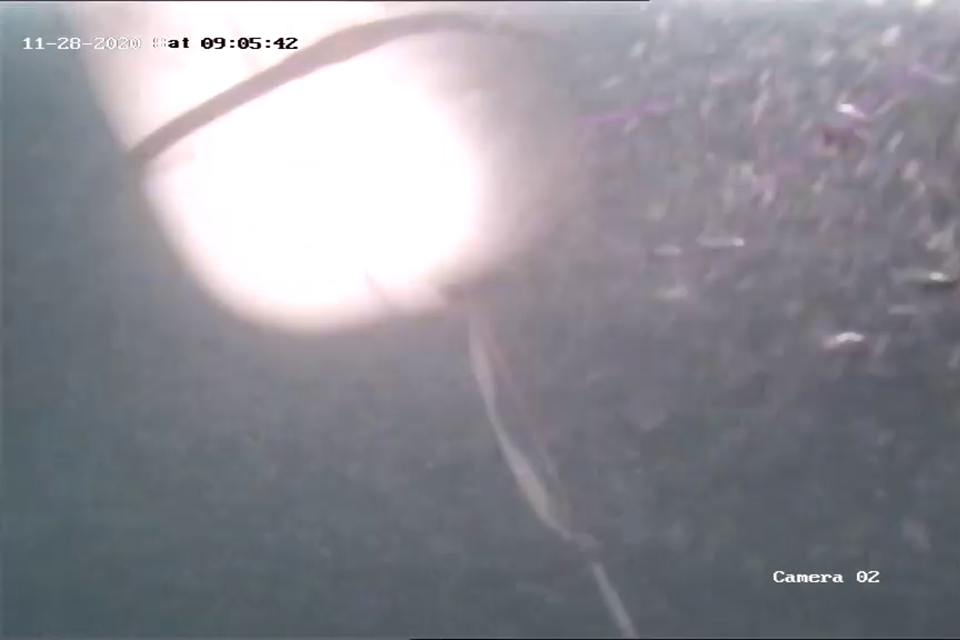Capsize and sinking of scallop dredger Joanna C with loss of 2 lives
Location: South of Newhaven, England
Accident Investigation Report 7/2022
Read our marine accident investigation report, which includes what happened, actions taken, and recommendations:


Summary
Early in the morning on 21 November 2020, the scallop dredger Joanna C capsized south of Newhaven, England; only one of the three crew survived.
Joanna C’s crew was hauling the gear when they noticed that the starboard dredge bar had become snagged on a line of whelk pots. The snag caused a heel to starboard from which the vessel could not recover, and it capsized rapidly.
The MAIB’s investigation found that through-life modifications, culminating in extensive alterations in 2019, had reduced Joanna C’s previously good stability to a state where it had very low reserves of positive stability and increased vulnerability to capsize. The detrimental effect of the modifications was unknown to the crew and regulator alike because, although a stability assessment had begun after the 2019 modifications, the analysis was never completed, and the vessel was free to continue operation.
During the capsize Joanna C’s mate was thrown into the water and the skipper later managed to escape as the inverted vessel sank; however, the deckhand remained trapped inside. The vessel’s liferaft did not inflate during the accident because the uninflated liferaft had insufficient buoyancy to initiate the inflation mechanism. The absence of a liferaft adversely affected the survivability of the crew in the sea after the vessel sank.
Safety issues
-
Reserves of stability are critical to allow fishing vessels to operate safely and ensure recovery back to upright from a heel induced by the environmental conditions or a snagging. Joanna C’s very low margin of positive stability left the vessel extremely vulnerable to capsize.
-
Liferafts fitted for ‘float-free’ operation must have sufficient buoyancy in the uninflated state to activate the inflation mechanism. Although a buoyancy standard existed for larger SOLAS liferafts there was no corresponding requirement for smaller, non-SOLAS liferafts such as those fitted to fishing vessels.
Statement from the Chief Inspector of Marine Accidents

Recommendations
A safety recommendation (2022/124) has been made to the Maritime and Coastguard Agency to ensure that stability requirements for small fishing vessels are applied as intended and that, where stability checks are required, fishing operations should be suspended until a vessel has been satisfactorily assessed.
During the investigation a safety recommendation (2021/116) was made to the British Standards Institution to propose the introduction of a minimum buoyancy requirement for liferafts certified by the International Organization for Standardization. The International Organization for Standardization’s technical committee subsequently agreed to include a buoyancy requirement in its revised liferaft standard.
Related publications
In parallel with our report a safety flyer has been released to the fishing industry highlighting the need to consider the impact that modifications could have to the vessel’s stability, and the importance of checking where ‘float free’ arrangements are in place, that the buoyancy of the liferaft will be sufficient to overcome the inflation mechanism.
Photograph credits
The first photograph showing Joanna C at sea is courtesy of Joanna C’s owner and the second photograph, a survey image of the wreck of Joanna C, is courtesy of Trinity House.